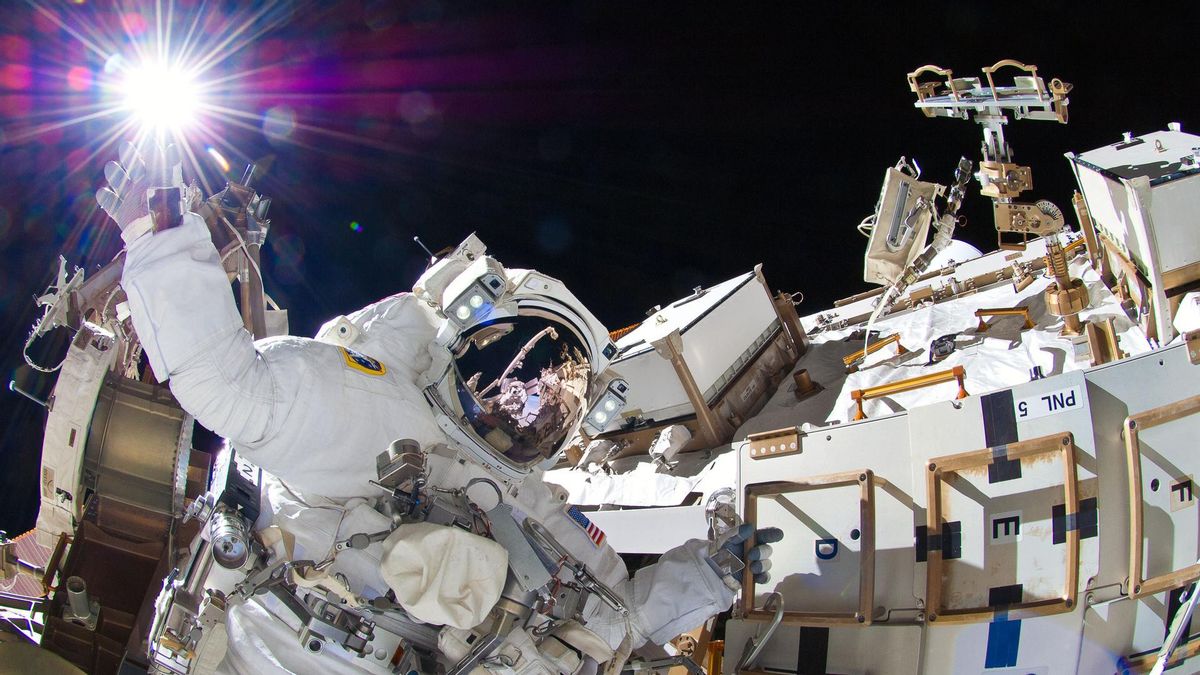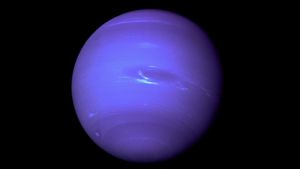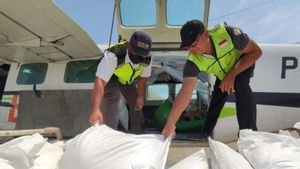JAKARTA - NASA astronauts on the International Space Station (ISS) are testing a new built-in water-cooled spacesuit to withstand the heat of space. In a recent video, NASA has shown how its personnel make a spacewalk outside the ISS while receiving cold water from an on-board device.
The astronauts wear special suits under their spacesuits that feature tubes filled with a constant stream of circulating water.
The concept of using water as a coolant goes back to the Apollo era in the 1970s. But NASA's new system is equipped with a pressure sensor, a thermal control loop to maintain a set temperature, and the ability to release warm water vapor into space.
According to NASA, the cooling technology is being tested for the upcoming Artemis mission to the Moon, which will take place in 2025.
Later in the decade, the lunar rover Artemis exploring the moon's South Pole will be wearing a 250° Fahrenheit (121 Celsius) temperature-resistant spacesuit to keep them safe. NASA has outlined the upcoming technology in a new video, entitled 'Keeping Cool in Space'.
"Imagine you are an astronaut on the Moon," said NASA, as quoted by the Daily Mail. "Your job over the next eight hours will be to explore, collect science samples, traverse lunar hills, collect rock samples, and set up equipment as part of the Artemis program."
“The temperature on the surface of the moon can reach 250 degrees Fahrenheit. How does NASA keep astronauts cool in space suits so they can work on the Moon? Fortunately, every spacesuit has its own personal cooling unit," NASA said.
During space travel, astronauts need protection from the sun's heat, as well as the heat generated by their own bodies as they work. NASA says air cooling is not enough for this important job, so instead turns to water as a coolant.
At the heart of NASA's Spacesuit Evaporation, Rejection Flight Experiment (SERFE) is the oven-sized device that sits on the ISS. NASA says it's 'all the essential elements of a spacesuit cooling system in one box'.
This provides the astronauts with a constant supply of cold water as they make their spacewalks on the ISS.
Two of these SERFE boxes have actually been pre-built. One aboard the ISS and another at NASA's Johnson Space Center in Houston.
Engineers have performed the exact same tests in the field on identical SERFE units as those performed on the ISS.
However, the boxy SERFE device is just a prototype of what astronauts on the moon will eventually have to carry on their backs, so part of the challenge is shrinking it down to make it portable. According to NASA, work is underway to build this cooling backpack.
An important part of NASA's upcoming technology is removing heat from the water circulating through the spacesuit, which is generated by the astronaut's body.
For this purpose a 'heat rejecting device' called a spacesuit water membrane evaporator (SWME) is designed in the SERFE box. SWMS circulates water from the liquid cooling suit through a small, hollow, water-repellent tube. As liquid water passes through these tubes, the water vapor is expelled into space, thereby dissipating heat.
The SERFE box runs for eight hours at a time – roughly what space travel looks like.
When turned off, contaminants can build up in the water which can affect water flow, so NASA personnel on the ISS must take water samples regularly.
Current experiments with SERFE on the ISS serve as research into how such a system will work under high temperatures and low gravity in the future Artemis era.
NASA's Artemis program will land the first woman and the next man on the moon by 2025, specifically in the moon's south polar region.
It is also hoped that the continued existence of a lunar man will eventually be used as a 'stepping stone' for the first human mission to Mars.
VOIR éGALEMENT:
NASA's original date for sending humans back to the moon was 2024. However, last year that date was postponed. Much of this is due to litigation from Amazon founder Jeff Bezos' company Blue Origin.
Artemis I, NASA's unmanned test flight of the Space Launch System (SLS) rocket and Orion spacecraft, is due to launch later this year after a brief delay. To this day the original Apollo astronauts remain the only humans sent into space.
The famous program brought about a human project to walk on the moon for the last time in 1972, as part of the Apollo 17 mission.
After returning humans to the Moon in 2024, NASA plans to send astronauts to the moon once a year and conduct lunar exploration by 2028.
The program will lay the groundwork in NASA's plans to send a manned mission to Mars in the 2030s.
In April 2020, NASA released detailed plans for the 'Artemis Base Camp' which will be home to the first woman and the next man on the moon in 2024.
The 13-page document highlights elements such as terrain vehicles to transport astronauts around the landing zone, permanent habits, and mobility platforms to travel across the lunar surface.
The English, Chinese, Japanese, Arabic, and French versions are automatically generated by the AI. So there may still be inaccuracies in translating, please always see Indonesian as our main language. (system supported by DigitalSiber.id)















